Trier, Porta Nigra
Q152339Augusta Treverorum: important Roman city, modern Trier.
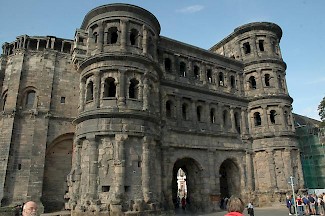
The Porta Nigra or "black gate", is the most famous building of Trier and has become its symbol. It belongs to the walls of Trier, which were erected during the reign of Marcus Aurelius (161-180). Dendrochronologically, it can be dated to the year 170 CE.
This was a peaceful time, and it comes as a surprise that such a massive gate with so many windows for catapults was built. However, this was also the time of an unexpected raid by the Chauci, who were defeated by the future emperor Didius Julianus. The people of Gallia Belgica, the province of Didius Julianus, to which Trier belonged, may have been scared. Still, it seems that the monument was a bit unnecessary, and the fact that it gave access to a colonnaded road suggests that the main purpose of the Porta Nigra was to impress visitors.
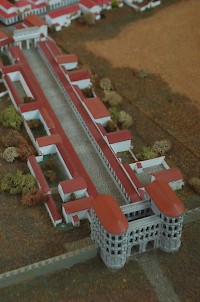
Unfortunately, within a generation, during the war between the emperor Septimius Severus and his rival Clodius Albinus, the walls were used when the Twenty-Second Legion Primigenia defended Trier against the last-mentioned (196). The third century saw the rise of new federations of Germanic tribes, but Trier was usually safe. However, the walls were insufficient to keep away the Germanic warriors who looted the valley of the Moselle in 256. Trier was sacked.
Almost immediately, the people of Gallic and Germanic provinces started to reorganize themselves in what is called the Gallic Empire of Postumus. This was a splendid age for the Roman territories north of the Alps, but Postumus' successor Tetricus was defeated by the "official" emperor Aurelian, who removed troops from Gaul and allowed the inevitable to happen: the Germanic tribes invaded again. Trier was again sacked.
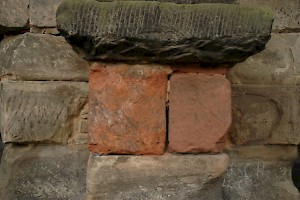
Order was restored by Constantius I Chlorus, who made Trier his residence. However, the batteries of the Porta Nigra had to shoot their arrows on many more occasions. In 353, the usurper Magnentius besieged the city (in vain) and in 360, Germanic tribes sacked Trier. The city was essentially left to its own when the imperial residence was removed to Arles. Undefended, it was mercilessly attacked by the Germanic tribes, who sacked it four times between 410 and 435. Trier was also captured by the Huns in 451, and became Frankish in 485 or 486.
The Porta Nigra was still functioning, and survived the Middle Ages. A church, dedicated to Saint Simeon, was built next to it, and later, a chapel was built on the upper floor of the western tower of the gate. As a consequence, it was never demolished; instead, there have been many repairs: sometimes with bricks, on other occasion with the red natural stone that is quarried close to the city.
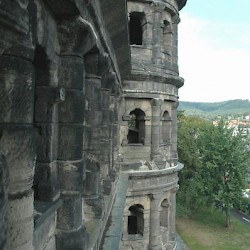 Porta Nigra, façade |
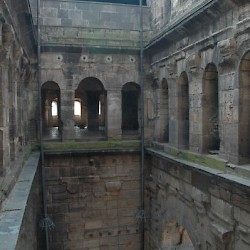 Trier, Porta Nigra, inside |
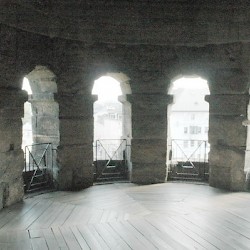 Porta Nigra, catapult room |
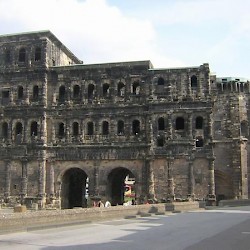 Trier, Porta Nigra, from the south |